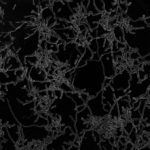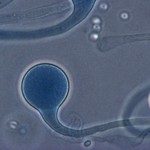Link to Pubmed [PMID] – 33037432
Link to HAL – pasteur-03222501
Link to DOI – 10.1093/mmy/myaa086
Medical Mycology, 2020, 59 (5), pp.486 - 497. ⟨10.1093/mmy/myaa086⟩
Scedosporiosis/lomentosporiosis is a devastating emerging fungal infection. Our objective was to describe the clinical pattern and to analyze whether taxonomic grouping of the species involved was supported by differences in terms of clinical presentations or outcomes. We retrospectively studied cases of invasive scedosporiosis in France from 2005 through 2017 based on isolates characterized by polyphasic approach. We recorded 90 cases, mainly related to Scedosporium apiospermum (n = 48), S. boydii/S. ellipsoideum (n = 20), and Lomentospora prolificans (n = 14). One-third of infections were disseminated, with unexpectedly high rates of cerebral (41%) and cardiovascular (31%) involvement. In light of recent Scedosporium taxonomic revisions, we aimed to study the clinical significance of Scedosporium species identification and report for the first time contrasting clinical presentations between infections caused S. apiospermum, which were associated with malignancies and cutaneous involvement in disseminated infections, and infections caused by S. boydii, which were associated with solid organ transplantation, cerebral infections, fungemia, and early death. The clinical presentation of L. prolificans also differed from that of other species, involving more neutropenic patients, breakthrough infections, fungemia, and disseminated infections. Neutropenia, dissemination, and lack of antifungal prescription were all associated with 3-month mortality. Our data support the distinction between S. apiospermum and S. boydii and between L. prolificans and Scedosporium sp. Our results also underline the importance of the workup to assess dissemination, including cardiovascular system and brain. Lay Summary Scedosporiosis/lomentosporiosis is a devastating emerging fungal infection. Our objective was to describe the clinical pattern and to analyze whether taxonomic grouping of the species involved was supported by differences in terms of clinical presentations or outcomes.





